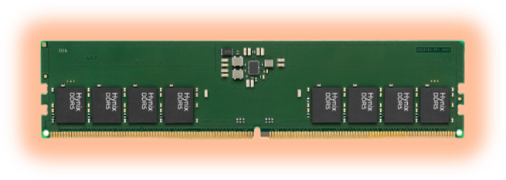Memory Components for Home Entertainment Applications

Home entertainment has come a long way since the first TVs became commercially available in the 1950s, and the video cassette recorders for consumers followed in 1972. Video games entered the market in the 70s and 80s and are the top performer in the home entertainment category today. Do you still remember the humble beginnings of video games with their simple pixelated graphics and joystick controller? Atari Video Computer Systems (VCS) was groundbreaking in 1977 because it was the first video game to incorporate microprocessors instead of relying on a core board with diodes and transistors. With 128 bytes of RAM, 2 or 4KB ROM chips stored in removable cartridges, and its custom graphics chip Stella, the Atari 2600 set a new standard at the time.
Let the games begin
Since Atari 2600, the home entertainment video game industry has advanced exponentially in large part because of the technological progress of the system components that are embedded. Compared to the simple 2D designs of the early days, the advent of virtual reality (VR) and augmented reality (AR) technology now allows players to be immersed, bringing the gaming experience to a new level. The latest trend of 3D video gaming based on VR/AR has driven the growth of the global game console market beyond $50 billion. The growth of the entire home entertainment industry has accelerated during the pandemic. The demand for applications like remotes, gaming devices and paddles, top boxes, and multimedia controllers increased as stay-at-home orders kept people indoors with fewer leisure and entertainment options.
The need for speed
Optimization of the entertainment or gaming system’s memory components is central to the user experience, next to CPU and GPU. Home entertainment products are designed with low-density memory components that provide faster speeds and reduced power demand. The embedded DRAM component serves as the “working” memory. More DRAM means faster load times thanks to direct and instant access to the memory in contrast to retrieving the last data from the hard disk. The speed with which levels, maps, movements, and textures can be loaded translates in a smoother experience. However, since sequential generations of DDR memory can’t be exchanged seamlessly, the CPU and motherboard determine the choice of DRAM component. This in turn makes the applications vulnerable to EOL/LTB challenges and renders the long-term support of mature DRAM technologies essential. For more casual gaming and streaming, eMMC components are a cost-effective alternative for storage.
Beyond Gaming at Home
In addition to gaming boxes, other home devices typically have eMMCs and embedded DRAM for local, internal storage. These include gaming controllers smart TVs, smart remotes, VR headsets, and surround sound systems. Additionally in the home, but beyond gaming you’ll find these devise in digital washers/dryers, smart thermostats, smart cameras, and smart assistants like Google Home and Alexa.
Long life
On average, users keep their game consoles for 6 to 9 years. Big players in the market release new editions with more or less the same frequency. Consequently, careful component selection during the design stages is necessary because repairs and replacements during the application’s lifetime are cumbersome and logistically complex. Robust, reliable DRAM and eMMC components from a supplier offering long-term support give manufacturers peace of mind throughout the system lifecycle.
SMARTsemi is your supply chain partner for DRAM components, eMMC solutions, and SD/microSD Flash Memory Cards for long-life applications. With 20+ years of industry experience, we understand your challenges and have aligned our priorities with yours to simplify your memory chip supply chain for the long run. We know what you need before you need it. Get a jump start and request a sample today.







